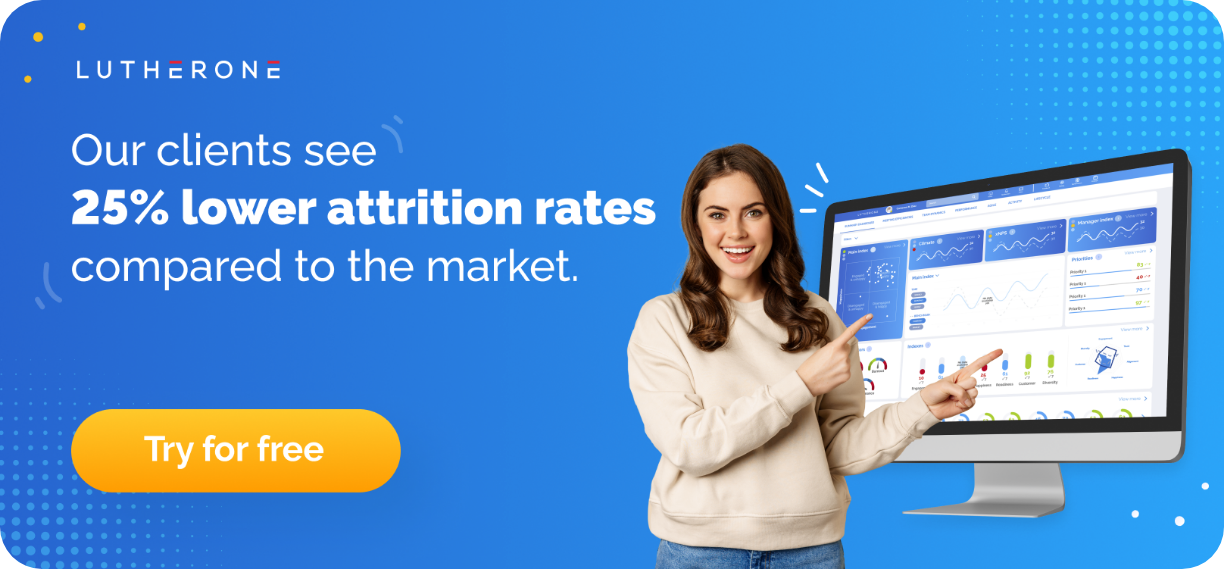EMPLOYEE ENGAGEMENT
Unleashing the Power of HR Analytics in 2024: Practical Examples

In today's competitive business landscape, HR analytics has emerged as a game-changer, enabling organizations to make data-driven decisions that drive growth and employee success. Leveraging cutting-edge technology, HR professionals can now harness the power of data to continuously engage, develop, and retain their workforce. Let's explore some real-life examples of how HR analytics is transforming the way organizations manage their talent and address workplace challenges.
Continuous Engagement Mapping & Management:
Using HR analytics, companies can measure and monitor employee engagement in real-time. By collecting data on employee sentiment, satisfaction, and work-related experiences, HR teams gain valuable insights into the factors that influence engagement. Armed with this data, they can take proactive steps to boost engagement, such as implementing targeted training, recognizing high-performing employees, and optimizing work processes.
Skill & Competence Mapping and Predicting Talent Needs:
HR analytics enables organizations to identify skills gaps within their workforce and forecast future talent needs. By analyzing employee skills, qualifications, and performance data, HR professionals can proactively plan for talent acquisition and development. Predicting talent needs in advance ensures that the organization is always equipped with the right people in the right roles, enhancing overall efficiency and productivity.

Never miss a LutherOne article or e-Book: SUBSCRIBE
Predicting Workplace Challenges: Attrition, Burnout & Performance Issues:
By analyzing historical data, HR analytics can predict potential workplace challenges, such as employee attrition, burnout, and performance issues. This proactive approach allows HR teams to take preventive measures to retain valuable talent, enhance employee well-being, and address performance gaps before they escalate into larger issues.
Turning Performance Management into a Business-Driving Process:
HR analytics revolutionizes performance management by providing real-time insights into employee performance. Continuous feedback and performance data help identify top performers and areas for improvement. Organizations can align individual goals with business objectives, ensuring a high-performing and motivated workforce.
Optimizing Talent Placement and Development with Job Matching:
HR analytics enables data-driven talent placement by matching employee skills and competencies with the requirements of different roles. By placing the right talent in the right positions, organizations can maximize employee potential and drive better business outcomes.
Getting Started with HR Analytics:
-
Identify key HR metrics critical to their business, such as turnover, engagement, and performance.
-
Employ practices to collect relevant data.
-
Interpret and analyze the data to make informed HR decisions in hiring, training, and performance management.
-
Continuously monitor and evaluate the effectiveness of HR decisions, adjusting strategies based on new data insights.
Unlock the Full Potential with LutherOne:
The easiest way to kickstart your HR analytics journey is by adopting LutherOne, an intelligent solution that collects and analyzes data from daily interactions. With LutherOne's deep insights, predictions, and recommendations, you can make data-driven decisions that drive business success and enhance employee engagement.
Try it now and witness data-driven success!
Take the next step towards employee retention by trying LutherOne today.

%20(1).png)